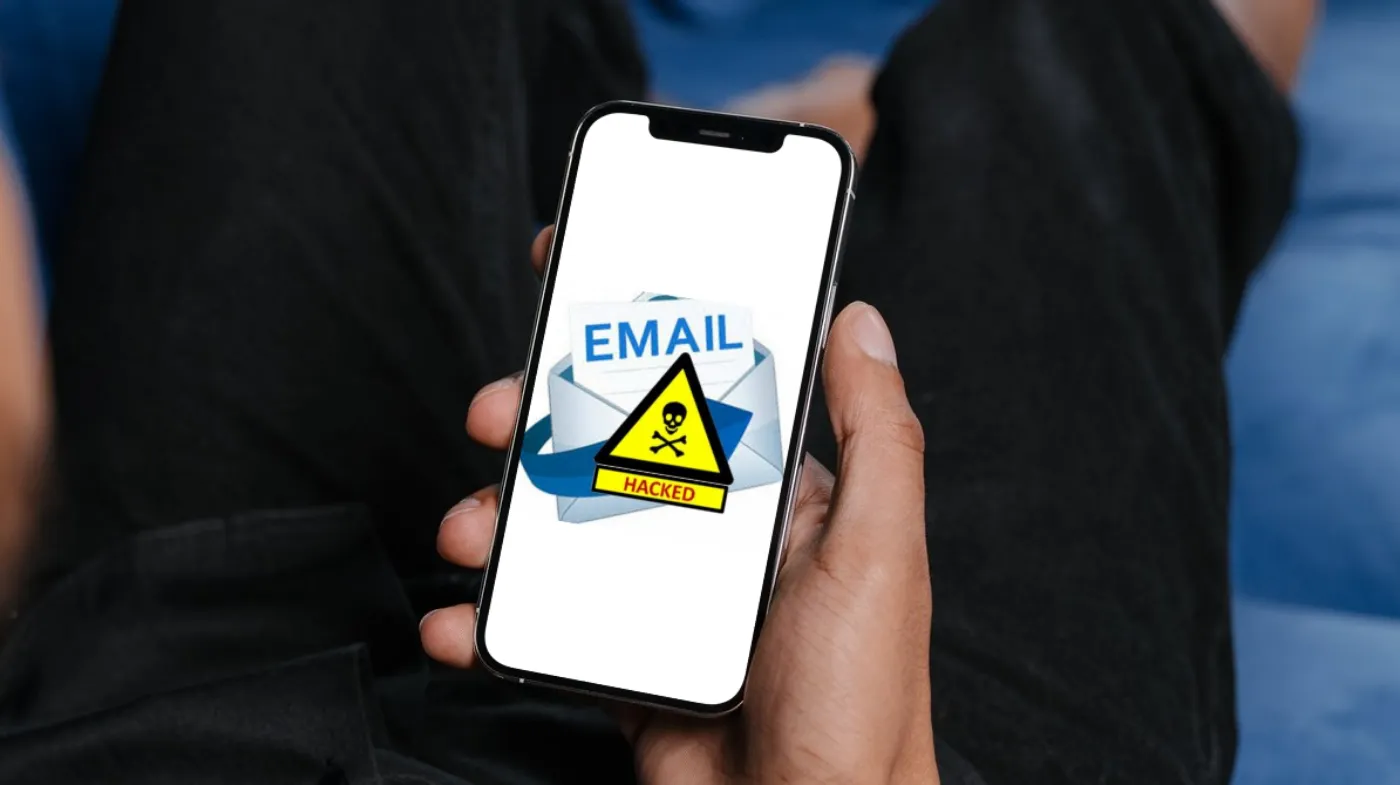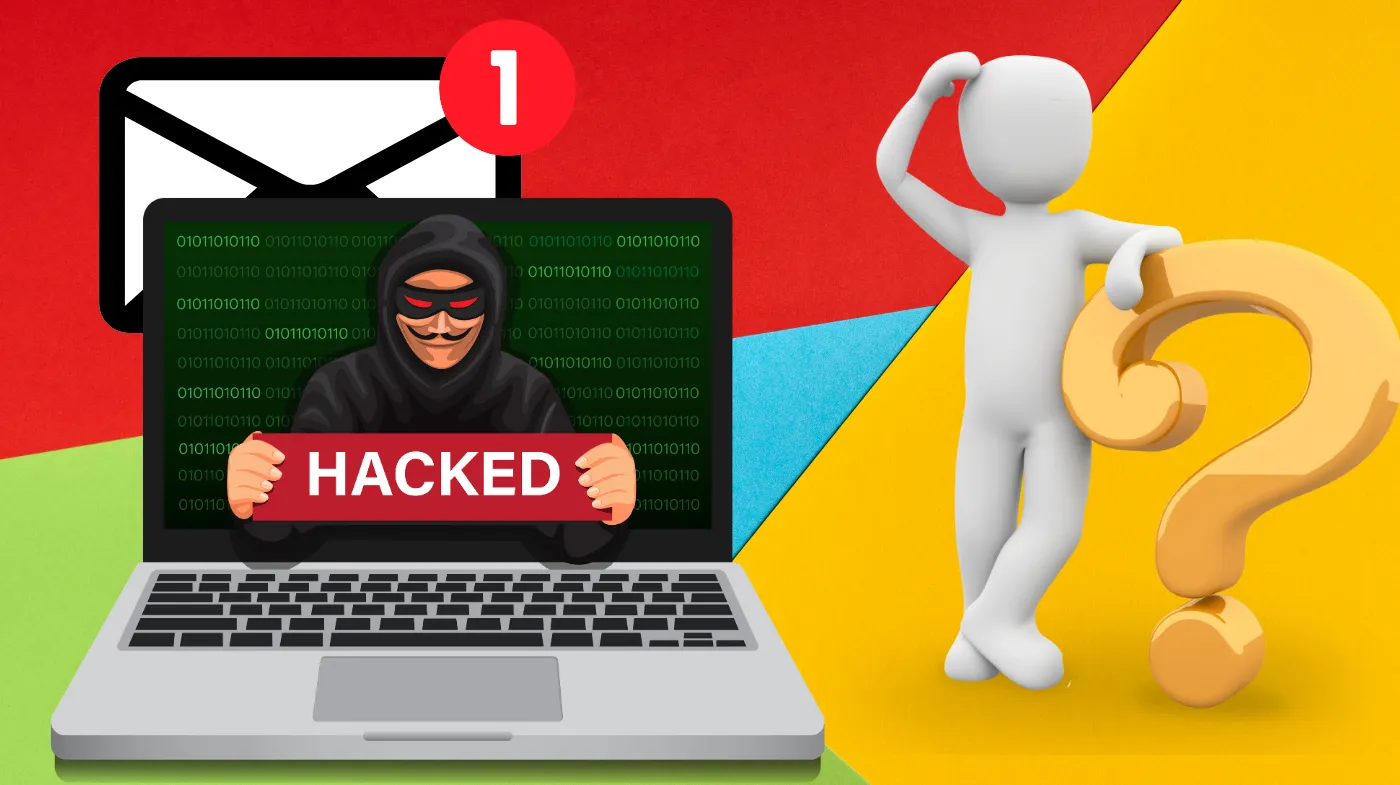
You might think that your email is safe as long as you haven’t shared your password, but unfortunately, that’s not entirely true. The reality is that someone can target or even compromise your email account without ever knowing your actual password.
Phishing is one of the most common tactics: attackers trick you into clicking a fake login page and stealing your details. Another serious threat is malware or keyloggers, which can capture your keystrokes or hijack your session while you’re logged in.
These methods bypass the need for a password altogether. The more connected your email is to third-party apps or services, the more vulnerable it becomes.
In this article, we’ll explore how your email can be hacked without a password, the warning signs to watch for, and the exact steps you should take if you suspect your account has been compromised.
Common Ways Email Can Be Hacked Without Knowing Your Password
Email security isn’t just about passwords; there are various methods hackers use to gain access without them, such as:
Phishing and “Man-in-the-Middle” Attacks
How can attackers gain access to your email without needing your password? One common method is phishing. You receive a deceptive email containing a link that appears legitimate. When you click it and enter your email and password, the attacker captures your credentials.
Another tactic involves “man-in-the-middle” attacks, where attackers intercept your communication. They don’t just steal passwords; they also capture session cookies, allowing them to impersonate you and bypass two-factor authentication.
These same techniques can also be used to intercept sensitive data if you’re trying to send credit card details safely, making secure communication practices even more critical.
Malware, Keyloggers, and Session Hijacking
Cybersecurity threats extend beyond phishing and man-in-the-middle attacks; malware and keyloggers pose significant risks to your email security. If your device is infected with a keylogger, it can track everything you type, including your passwords.
Meanwhile, certain types of malware can capture session tokens stored in your browser, granting attackers access to your email account without needing your login credentials. If you remain logged in, this vulnerability increases.
Credential Stuffing and Leaked Passwords
When you reuse passwords across multiple sites, you greatly increase the risk of your email being compromised.
If one of those sites suffers a data breach, attackers can exploit leaked credentials and attempt to access your email account through a method known as credential stuffing.
Many underestimate how frequently this tactic succeeds; it’s one of the quickest ways for hackers to gain entry. They automate login attempts using stolen username-password combinations, often with alarming efficiency.
SIM Swap Attacks and Social Engineering
While many people focus on password security, they often overlook the dangers posed by SIM swap attacks and social engineering, which can compromise your email without needing your password.
Attackers can trick your phone provider into transferring your number to a new SIM card. Once they gain control, they can receive password reset codes, effectively locking you out of your account.
Third-Party App Vulnerabilities
As you connect various third-party applications to your email, each one can introduce a potential vulnerability. Any app you’ve granted access to can become a weak point; if it’s compromised, attackers can exploit that access to infiltrate your inbox.
Many users forget how many services they’ve connected over time, and some may have dormant apps with outdated security measures.
What You Should Do If You Suspect Your Email Is Compromised?

If you suspect your email is compromised, acting quickly is essential. Below are the key steps you should take to secure your account and prevent further damage:
Change Your Password Immediately
Changing your password immediately is essential if you suspect your email has been compromised. A strong, hard-to-guess password is vital; avoid reusing old ones, as they may be weak or already exposed.
Consider using a free password generator online to create a unique password that combines letters, numbers, and symbols. This reduces the chances of hackers guessing it. Additionally, make sure your new password is markedly different from previous ones to enhance security.
Update Your Recovery Options
Have you considered how crucial it is to update your recovery options when you suspect your email might be compromised?
Start by finding your email settings. Check your backup email addresses and phone numbers. If you find any that you don’t recognize, remove them immediately.
Unrecognized recovery options can be a gateway for hackers to regain access to your account. Confirm your recovery methods are secure and up to date, as they’re your lifeline for account recovery.
This step is just as important as avoiding typical password mistakes people often make, like reusing old passwords or using weak combinations, both of which make it easier for attackers to take control.
Enable Two-Factor Authentication (2FA)
After updating your recovery options, the next critical step is enabling Two-Factor Authentication (2FA).
If it isn’t already on, activate it now to strengthen your account’s defenses. Using an authenticator app like Google Authenticator is highly recommended---it generates time-sensitive codes that make unauthorized access far more difficult.
Avoid SMS-based codes whenever possible, as they’re more exposed to SIM swap attacks.
Before setting up 2FA, consider running an email breach checker to see if your email has appeared in any known data leaks.
By implementing 2FA, you create an additional barrier that requires not just your password, but a second form of identification that only you control.
Review Active Sessions and Devices
If you suspect your email has been compromised, reviewing active sessions and devices is essential. Most email providers display recent login activity, so check for any unknown IP addresses or unfamiliar devices.
If you notice anything suspicious, it’s important to log out of all sessions immediately. Changing your password again is also advisable to secure your account further.
Revoke Access to Unrecognized Apps
When you suspect your email has been compromised, it’s essential to check which third-party apps have access to your account. Navigate to your email settings and review the list of connected applications. Revoke access to any apps you don’t recognize or no longer use.
If you’re uncertain about an app’s legitimacy, it’s safer to disconnect it. Consider this a protective measure; sometimes, it’s best to start fresh.
Disconnect everything and then reconnect only the essential apps you trust. This helps safeguard your account from potential threats and keeps your personal information secure.
Run Antivirus and Malware Scans
Running antivirus and malware scans is vital as soon as you suspect your email has been compromised.
Start by scanning your device with reputable antivirus software to identify any threats. If the scan reveals malware, take immediate action by removing those threats.
It’s imperative to guarantee that your device is clean to prevent further access to your email. If the infection is severe, consider reinstalling your operating system to eliminate all traces of the malware.
Notify Your Contacts
Alerting your contacts should be one of your first actions if you suspect your email has been compromised. If someone used your account to send scam messages, your contacts may be at risk of falling for phishing attempts.
Send them a warning about the situation and ask if they’ve received any unusual emails from you. This proactive communication helps them stay vigilant and protect their information.
Additionally, inform them not to click on any suspicious links or attachments that may have originated from your account.
Protect Your Email Before It’s Too Late
Your email holds more personal and financial data than you may realize. Even without knowing your password, attackers have multiple ways to break in, from phishing and malware to SIM swaps and vulnerable third-party apps.
By taking proactive steps like using strong passwords, enabling 2FA, and regularly reviewing your account settings, you significantly reduce your risk.
Don’t wait for warning signs; secure your account now. If your email is already compromised, act fast, clean your device, and take back control. Staying alert today is the best way to protect your digital life tomorrow.
